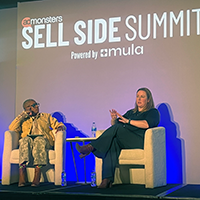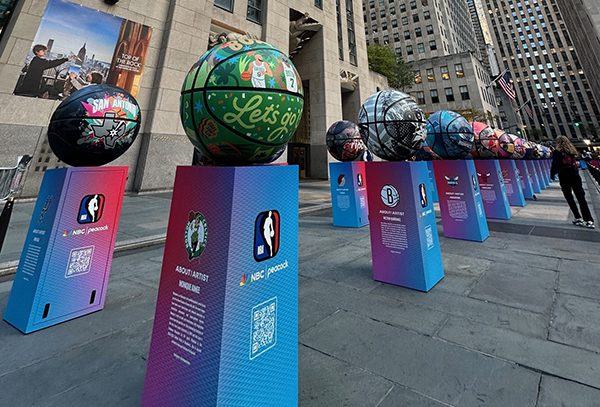Marketers who navigate by the seat of their pants trying to home in on under-20 age segments risk a bad case of posterior rug burn. Yet many brand managers, without any research to back them up, believe they know what works best for youngsters, tweens, and teens, argues James McNeal.
A professor at Texas A&M University at College Station, and author of several books on marketing to kids, McNeal calls this group “wiwaks” as in “when I was a kid.” Marketers’ intuitions and youthful memories can’t tell them how societal changes and technology have made young folks different from even a generation ago, McNeal and other experts say.
Global communications have accelerated trends, as MTV and the Internet bring ideas from as far away as Latin America and Cape Town.
“What’s hip changes faster than it ever did before,” says Andy Greenfield of Greenfield Consulting Group, Westport, CT.
Marketers need to feel the pulse of trends in real time, and then get promotions out the door before fashions change again. Take Nike. Most marketers would give Chicago Bulls season tickets for Nike’s clout with teens. Nike has been the most popular brand with teens for the past four years, due in part to ads targeting teen girls with a message of empowerment, says Michael Wood, director of syndicated research at Teenage Research Unlimited in Northbrook, IL.
Nike earned 40 percent of mentions this spring on TRU’s “Coolest Brand Meter” survey. (Tommy Hilfiger placed a distant second with 19 percent of mentions.) Yet Wood sees the start of a teen stampede to the next new thing: Nike dropped 12 percent from the previous survey last fall.
“The problem is that grandmothers are wearing Nikes,” Woods explains. “It’s hard to keep ownership with teens. The influencers are moving on to other, smaller brands. Teens are very fickle. You have to be perceived as being new, cool, and relevant.”
Today’s teens – Generation Y – differ from Gen Xers in two ways. “This is the first real generation to grow up with technology tools,” and fully embrace beepers, cell phones, and laptops as everyday helpers, Woods says. And Gen Y is in sync with cultural diversity. “That’s why Tiger Woods has done so well with teens,” Wood adds.
Kids have a clear view of what marketing is about, and at a younger age.
“They are making brand choices at a much earlier age, at four and five years old,” says Mark Mears, ceo of TIC TOC, a Dallas-based promotion agency.
“Seven-to-eight-year-olds know what the purpose of an ad is. You never heard that 20 years ago,” Greenfield says.
Kids are more skeptical of marketing messages because they are assaulted by so many – some 3,000 to 5,000 a week, compared to 1,000 a generation ago, Greenfield estimates.
Since kids are savvier, promotions have to work harder. Contests need to seem winnable.
Marketers need to win with kids for at least four reasons. Youths spend $27 billion of their own money, and their income grows 20 percent a year. Kids are taking on household chores and shopping for the family if both parents work, so they have more influence on family purchase decisions. And as they grow, so does their brand loyalty. Today’s 30.2 million teens will grow to 35 million by 2010, bigger than the Baby Boomers, according to the U.S. Census Bureau.
To reach teens, marketers need to learn what they like and appeal to their values.
A Taste for Winning Teens create distribution systems to dole out Coke cards. Teens have a mix of appetites and high ideals. Coca-Cola tapped that to introduce its Coca-Cola Card on high-school campuses this year. Coke invited high school student leaders to come up with creative ways to distribute the promotional cards to their peers. A month-long national contest awarded a $10,000 donation to the winner’s school for the top idea. Two second-place winners got $5,000 for their schools, with 50 winners getting $1,000, and 100 schools earning $100.
The contest attracted “tremendous involvement” from nearly 5,000 schools, says Coke spokeswoman Diana Garza.
“We wanted kid-to-kid distribution of the cards” in order to help “seed” teen behavior in handing out cards. The promo helped local bottlers strengthen relations with the schools, says Garza.
“The bottlers brought this opportunity up with the schools, or they agreed to let us send a letter to school officials saying we would love to have teen-to-teen distribution. The bottlers were already giving the kids summer jobs to go out and distribute the cards,” says Garza.
Coke launched the summer card program March 15, mailing four cards each to 750,000 influential teens, who were asked to keep one and give three cards to friends. As of June 2, Coke had distributed 55 million cards. A second phase sent out 2.2 million cards on 12- and 24-packs, along with Coca-Cola/MasterCard ATM Cash cards awarding instant cash prizes.
Teens use their Coke Cards to get deals from local and national businesses; all offers are tied to a Coke purchase. There are 280 customized versions of local offers.
“To be relevant locally, we let the bottlers tell us what’s going to drive business in their markets,” Garza says. “Based on that, we produced thousands of sleeves naming the local offers.”
Such cards have a lot of clout with teens when they offer true value. Kids who upsize a large Coke at the movie theater can flash their red card and get a free seat on Saturday night.
Quick Rewards Teens love immediate gratification and the idea of winning, says TRU’s Wood. Games should be simple and have easy odds for winning. Kids like smaller prizes “because then they believe they can win,” Wood says.
But teens also are motivated by philanthropy, says Roberta Nusim, ceo of Youth Marketing International, the Easton, CT, agency that handled Coke’s schools contest.
“I know from the quality of the entries we got back that students took the contest very seriously. They realized their school was going to benefit from the cash prizes,” says Nusim, a former teacher.
About 500 schools submitted videotaped and written entries to the panel of educators awarding prizes. In one school where a student had recently died in a car accident, classmates gave cards to seatbelt-wearers. Another gave cards to students who practiced their French lessons; a third school held an Olympics, with cards as prizes.
Back to School Students like to learn through “real world materials,” says Nusim. But teachers have to see classroom promotion materials as a resource that fits the curriculum, not an ad.
For Jurassic Park: The Lost World, Youth Marketing created a teaching kit on paleontology for juniors and seniors. Sent out a month before the film opened, it contained information on the Jurassic Age and film scenes.
“The classroom is a great place to reach teens and future adults. You have the added value of being in a setting where the teachers can communicate a message more effectively than with a 30-second TV spot,” says Nusim.
Nestle USA targets through summer with a May to September promo for Nestle Crunch ice cream bars. Kids log onto react.com to enter the Ultimate Roller Coaster Trip and win a seven-day VIP tour of the top seven roller coasters in the country, plus $5,000 cash. Kids vote on their favorite coasters via react’s site and its weekly school-distributed newspaper, published by Parade magazine. React claims to reach 4.6 million teens and log 600,000 monthly page views on its Website.
An on-pack game piece directs kids to Nestle’s page on react.com, where kids can track current vote tallies, see bi-monthly profiles of the wildest roller coasters, and play the Nestle Meltdown, unscrambling theme park-related words before a Nestle’s bar timer “melts.”
The Other Middle-Age Tweens crave recognition and groove on fantasy. This is a job for the Internet. Before the Commandos and Gorgonites of DreamWorks’ Small Soldiers clash on the silver screen for the film’s release July 10, the GloboTech struggle will have played out for many kids on the Web. Curiocity for Kids’ FreeZone (www.freezone.com) pit the movie characters against each other in an online game to pique kids’ interest in the film. The site targets 8- to-12-year-olds with pre-release glimpses of the characters and a contest to describe a warrior and role-play how it might act. Winners get free tickets to Small Soldiers and related prizes.
The contest is but a skirmish in the promotional war game that Curiocity has planned to keep youngsters involved in Small Soldiers. Through 1998, the site will host online chats with Small Soldiers stars and give behind-the-scenes peeks at the movie’s production. Kids can create their own home pages and film-character postcards, says Emily Chapman, Curiocity director of business development.
“Every area of FreeZone will be used from April to the end of the year. We want kids to see the movie, and come back and experience the film more online,” she says.
DreamWorks picked FreeZone as the exclusive promotional Web site for Small Soldiers, departing from studios’ usual practice of setting up their own sites. DreamWorks used FreeZone already to promote Mouse Hunt and Paulie. Its relatively long-term plan for Small Soldiers includes site links to licensing and promotional partners to drive interest through Christmas.
The studio picked FreeZone for its built-in audience of 120,000 registered users, says Mark Vollman, DreamWorks’ manager of field promotions. Seattle-based Curiocity claims that kids make more than 3 million page views per month.
FreeZone’s typical 10-year-old user visits four times a week, spending 24 minutes per visit, says Chapman.
“You have to give kids more than text and pictures on a screen. They need to get involved and build something on their own,” says Justin Osmer, Curiocity marketing manager.
The best Web sites for tweens – including www.disney.com and www.nick.com- appeal to kids’ emerging desires to accomplish things and to get recognition.
“Kids at this age want to see their achievements in bright lights,” says Curiocity’s Chapman. That’s why the Web is a great promotional tool for reaching tweens: Its infinite capacity enables promo managers to post the names of all contest or game entrants, and bulletin boards lets marketers bring kids together.
Last month Kellogg signed on to sponsor the Kellogg K Club on FreeZone, giving kids a forum for chats with Kellogg brand icons like Tony the Tiger.
FreeZone invites tweens to act as junior reporters, advisory board members, and chat jockeys. They help peers with their homework and give other advice. Brands that bring kids together in a safe, productive forum build goodwill among kids and their parents.
Fantasy Island But sometimes tweens want a break from reality. Scholastic Entertainment, New York, appeals to kids’ appetite for fantasy with Animorphs, a two-year-old book series aimed at 8- to 13-year-olds. The 18 books published so far tell the story of five teens who can morph into any animal whose DNA they can capture, and then fight an evil force.
“It’s the X-files meets Invasion of the Body Snatchers,” says Leslye Schaefer, Scholastic senior vp-marketing and consumer products
Scholastic is producing a TV show slated to debut on Nickelodeon in September. Tricon Global Restaurants will break separate Animorphs kids’ meal promos in its KFC, Pizza Hut, and Taco Bell chains beginning in September. This is Scholastic’s first deal with any quick-service restaurant chain, and a rare joint promo by the Tricon chains. The promos will run sequentially, with some overlap, moving from KFC to Taco Bell to Pizza Hut between September and December. Strottman International, Irvine, CA, handles Taco Bell; Applause, Inc., Woodland Hills, CA, handles KFC and Pizza Hut.
Good Clean Fun Young kids don’t want characters or play value from promotions – they want both. It’s Marketing 101 for fast-food and packaged goods marketers: Pair your brand with a popular TV or film character and watch the little kids line up with Mom in tow.
But there’s also a big opportunity to use toys that emphasize play value rather than on-air recognition, says Cathy Snow, director of kids meal marketing for KFC. In addition to KFC’s tie-in with Scholastic’s Animorphs books and TV show, the chain also is running a two-month kids promo with Slimamander and other characters from Soapy Lagoon, characters created and licensed by Creative Tub Time, a White Plains, NY-based marketing firm founded by former Nabisco marketer Cliff Medney. Through July, KFC kids’ meals come with one of six water toys, including glowing green slime in a Slimamander-shaped case, and a Leap the Frog launcher. Produced by Applause, Inc., Woodland, CA, the toys target kids 3 to 8. KFC introduces permanent wall displays of its kids’ meal promos with the Slimamander campaign.
Even though kids have never experienced Soapy Lagoon characters before, Snow thinks they’ll like them when they see them.
“They’re the best toys we’ve ever done. I think it’s more important to create a toy that a kid will play with over and over” than a high-profile character, says Snow, a former marketer at LifeSavers and former steward of Wendy’s kids meal business.
One of KFC’s best toy premiums was a Spiderman wall walker, licensed from Marvel Entertainment. Snow prefers less-visible properties that are hungry for exposure, where more money can be put into the toy, and less into licensing fees. KFC recently licensed United Media’s, Wallace & Gromit, clay-animation characters whose short films are wildly popular in the U.K.
Still, hot entertainment properties are the ticket for most kids’ marketers. Cost Cutters Family Haircare salons, Minneapolis, has partnered with Saban Entertainment/Fox Kids to give away show-based premiums in its 900 salons. Eight premium items, a new item every six weeks, are based on Fox’s Life with Louie, Bobby’s World, Eek!Stravaganza, and The Tick.
The year-long Kid Head Quarters promo runs through February via McCracken Brooks Communications, Minneapolis. Last year Cost Cutters tied in with Turner Entertainment’s Scooby Doo in the haircare industry’s first kids’ continuity program.
Cost Cutters wants to differentiate its stores and break away from cutting prices to drive traffic, says Gretchen Parker, vp-entertainment marketing at McCracken Brooks.
“Originally we thought we might go with a generic off-the-shelf toy. But we felt it was important to bring Cost Cutters the sizzle and star power of a high-profile property,” she says. Nielsen ratings and Q scores showed the Fox properties appeal equally to boys and girls 6 to 12, Parker says.
The Scooby Doo promo last year boosted kids’ head counts while maintaining full prices, says Ralph Schulte, director of marketing for Cost Cutters. The ’70s cartoon dog also appealed to parents and stylists, Schulte says, adding, “The success is based totally on the quality of the licensed product. When you can connect with a figure from a cartoon it makes an offer that much more popular.”



